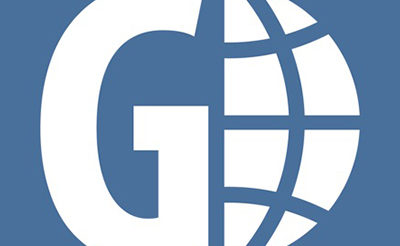7 key findings from the world’s biggest study on innovation

Which countries lead the world in innovation, where are the top tech clusters, and how should we measure the quality of innovation? The Global Innovation Index 2019 sets out to answer these questions, and more.
Despite signs of an economic slowdown, economies around the world are still experiencing a boom in innovation, driven by the combination of new technologies, new processes and new perspectives.
That’s one of the main findings of the Global Innovation Index 2019, the report from the World Intellectual Property Organization and its research partners Cornell University and INSEAD which ranks and analyzes the innovation performance of 129 countries and economies around the world. As well as taking the temperature of global innovation, this year’s GII also takes a look at the life-changing medical advancements that are set to transform our lives in the coming years.
Here’s a closer look at some of the key takeaways from this year’s report.
1. Amid economic slowdown, innovation is blossoming around the world
Many reports indicate global economic growth may be losing momentum – yet innovation expenditures are strong. Global R&D expenditures have been growing faster than the global economy, more than doubling between 1996 and 2016. Never in history have so many scientists worldwide laboured at solving the most pressing global scientific challenges.
Source: The Global Innovation Index Report, 2019
The question is whether this growth will continue. The report suggests we keep an eye on two things: – Whether government investment in innovation continues. It has been growing very slowly or not at all in recent years. – Any rise in protectionism, in particular protectionism that impacts technology-intensive sectors and knowledge flows.
2. Middle-income economies are on the rise
This year, again, the geography of innovation is changing with middle income countries on the rise. The ranking shows Viet Nam, Thailand, India, the Philippines and the Islamic Republic of Iran moving up the ranks. When comparing levels of innovation to the level of economic development, India, Viet Nam, Kenya, and the Republic of Moldova stand out for outperforming on innovation relative to GDP for the ninth consecutive year—a record.
3. And yet a global innovation divide persists
Moving from a successful middle-income economy with innovation potential to an innovation powerhouse is difficult. It takes time and persistence, perhaps over decades, for the innovation policy ambitions of economies at all levels to influence the global innovation landscape. An impermeable innovation glass ceiling exists that divides middle and high-income economies. Most of the potential to break through that ceiling comes from China and to some extent India, Brazil, and Russia.
4. Some economies get greater returns on their innovation investments
There is a divide in how effective economies are at translating innovation inputs into innovation outputs; some simply achieve more with less. China, a middle-income country, stands out for producing innovation output that is equivalent to Germany, the UK, Finland, Israel, and the US — but with considerably lower levels of input.
5. We need to measure the quality of innovation, as well as quantity
WIPO and its GII partners are introducing new metrics to assess the quality of innovation, including looking at levels of excellence at universities and in scientific publications, and the internationalization of patented inventions. Judged on these terms, the US takes first place, Germany second and Japan third among high-income nations, with China (1), India (2) and Russia (3) topping the ranks of middle-income economies.
6. Most top science and technology clusters are in the US, China and Germany
Innovation can be driven by geographic clusters of science and technology, business, government and academic entities in close proximity to each other, bolstering and building on each others’ work. Japan, China, Germany, France, the UK and Canada jostle for position at the upper end of the chart.
However, there are signs of movement in the Top 100, where clusters from five middle-income economies – Brazil, India, Iran, Russia, Turkey – have entered the rankings for the first time.
Top 10 Innovation Clusters
Source: The Global Innovation Index Report, 2019
7. Medical innovation needs more investment
The theme of this year’s GII is Creating Healthy Lives – The Future of Medical Innovation. Artificial intelligence, genomics, and mobile health applications are poised to transform healthcare globally, but only with support from investment and policy-makers. The 2019 GII reveals the exciting innovations that are changing the way healthcare is delivered, particularly in areas that are currently under-served.
The Global Innovation Index 2019 is the result of a collaboration between Cornell University, INSEAD, and the World Intellectual Property Organization (WIPO) as co-publishers, and their Knowledge Partners, Confederation of Indian Industry, Dassault Systemes, Sebrae, Brazilian Micro and Small Industry Support Services, and Brazilian Confederation of Industry.
